The Next Digital Economy

DISCLAIMER
Policy Horizons Canada (Policy Horizons) is a strategic foresight organization within the Government of Canada with a mandate to help the Government develop future-oriented policy and programs that are more robust and resilient in the face of disruptive change on the horizon. The content of this document does not necessarily represent the views of the Government of Canada, or participating departments and agencies.
On this page
Foreword
Over the past decades, we have experienced significant economic change due to digitization. In the decades to come, we must prepare for even more disruptive change, as a broad suite of technologies mature and combine to redefine the fundamental organizing principles of the economy.

This report explores how the Next Digital Economy could play out and discusses some implications for policy. This economic foresight does not aim to predict the future or prescribe policies. It aims to support decision makers in anticipating and addressing the challenges, as well as identifying and capturing the benefits that may arise if the economy evolves as described in this report. We encourage readers to examine the plausibility of the Next Digital Economy with an open mind, and to consider whether their organizations are prepared for the significant disruptions we might face.
Guided by our mandate, we hope to provoke thought and dialogue and to contribute to the development of robust policies and programs in the face of changes that lie ahead for Canada.
This report stems from an in-depth foresight study involving research, interviews, and workshops. It involved collaboration with several departments and agencies across the public service of Canada, as well as non-governmental experts and academics.
On behalf of Policy Horizons Canada, I would like to thank the numerous people who generously shared their time, their knowledge, and their thoughts.
Kristel Van der Elst
Director General, Policy Horizons Canada
Executive Summary
We are living through a profound transition towards the Next Digital Economy. Even if the outcomes of this transition may be positive for many, the changes it imposes could be difficult. Each previous economic transition has spawned new ways of thinking, redirected human energies, disrupted ways of life, overturned powerful institutions, and transformed the built and natural environments. The same could happen again, and this time the speed and scale of transformation might make adaptation more challenging than ever before.
The Next Digital Economy promises to revolutionize value chains, and introduce a different model for the production and consumption of goods and services. Much of our economic activity may become digitally intermediated, customized, on demand, and globally distributed.
Eight digital technologies are maturing and combining to change the economy:
- The Internet of Things will collect vast amounts of data and bring it to bear on the physical world.
- Artificial intelligence (AI) and automated cognitive tasks will introduce new economic actors.
- Robotics will perform physical labour and provide an embodied platform for AI.
- Advanced telepresence will allow us to project ourselves and our expertise anywhere in the world that is connected to networks.
- Virtual reality will offer immersive non-physical worlds, while mixed reality will combine physical and virtual worlds, creating a third space distinct from both.
- Advanced materials are enabling the production of micro- and nanoscale devices that can bring digitization to many new areas at low power.
- Decentralized production technologies such as 3D printing could use locally available inputs, including new biomaterials, to manufacture countless products on demand for local markets.
- Blockchain technologies create unique, non-copyable digital assets. This enables secure, low-cost transactions between parties who do not know each other.
The Nature of the Next Digital Economy
These technologies unbundle the factors of production, and offer applications to recombine them in short-run or even single-use value chains for goods and services. In the Next Digital Economy, individuals and firms may be able to pull together the components of ad hoc value chains as needed from a widely distributed pool of resources.
The Next Digital Economy could be one in which:
- Much cognitive and physical labour is unbundled into discrete tasks on networks.
- Manufacturing is mostly automated and multifunctional; some could be ‘reshored’ to local factories.
- Both simple and complex organic products may be grown anywhere using synthetic biology; these might include industrial products, building materials, foods, pharmaceuticals, and oils.
- Workers or machines operate remotely anywhere in the physical world that is networked. This may be done by teleoperating a machine or remotely guiding a person via a mixed reality device.
- Economies of scale give way to economies of scope. Instead of focusing on specialized production at scale, firms may offer a range of goods and services to client populations.
- Standard goods and services could be replaced by customized offerings. Customization is achieved at little or no additional cost, while reducing the costs of transportation, inventory, and waste.
- Value chains are ephemeral. Production resources are combined only when a specific demand arises, and are returned to the unbundled pool when production ends.
- AI and blockchain replace human intermediaries. As they learn from data in the digital economy, AIs take over many roles currently played by humans. Blockchain reduces demand for trusted middle players in transactions.
- What matters is access to factors of production, not owning them. This could be true for both firms and consumers.
- Production costs are lower as the marginal cost of digital goods – or digital elements of mixed goods – approaches zero. Cheap multipurpose devices replace many expensive goods and services.
These changes to the economy will have important consequences for firms, workers, and economic sectors.
Firms will change from corralling resources to calling up ephemeral value chains. The transition to the Next Digital Economy may create a turbulent period of ‘creative destruction’, fierce competition and low profit margins. Firms may transform their operations to take advantage of low-friction access to on-demand labour and other factors of production. Instead of amassing resources, they could shed overhead and employ fewer long-term employees; some firms may even be built to last only a short time. Firms that provide intermediary or data discovery functions could be replaced by blockchain and AI applications. Depending on competition and data protection regimes, a small number of large firms could capture much of the information and profits in a networked economy.
Workers will experience significant pressures. In the Next Digital Economy, machines could displace human labour for many tasks. This could reduce demand for labour long before machines can do every element of a job. Human workers could find themselves performing ‘centaur work,’ closely integrated with machines. Virtual workplaces, platforms, and advanced telepresence could place many white- and blue-collar workers into a competitive global labour market in which wages tend to converge across jurisdictions.
The service sector could be hit earliest. Many of the technologies that will shape the Next Digital Economy apply directly to service delivery. This sector, which employs about 80% of Canadian workers, is therefore likely to experience the early effects of the transition. AI solutions may provide inexpensive customized services in fields such as accounting, insurance, law, finance, health diagnostics, and retail. Over time, purpose-built robots could automate the fields of delivery, construction, cleaning, and personal care. Telepresence and mixed reality could allow off-site experts to guide low-skill on-site workers through complex tasks.
Manufacturing is transformed, leading to a shift from economies of scale to economies of scope. Mass production of identical goods could be replaced by distributed custom production of a range of goods, from houses to replacement organs, in closer proximity to the end user. The factories of the New Digital Economy could be multi-purpose and highly automated, creating an array of goods from a growing number of biological, mineral, plastic, and synthetic raw materials. However, the overall physical volume of manufactured goods might begin to shrink as the economy gradually dematerializes.
Natural resource extraction could become automated and remotely controlled. We already see automated or remote-controlled activities in mining, forestry, and oil and gas projects. This raises the possibility that extraction projects may not generate many local jobs. This could delink natural resource extraction from the secondary economy in many remote communities, changing the perceived benefits of development projects. Advances in synthetic biology could disrupt traditional resource practices, even as it offers a new source of prosperity.
The Challenges and Opportunities of the Next Digital Economy
The transition to the Next Digital Economy offers many opportunities and challenges for governments – recognizing and responding to them proactively may require rethinking some current policy and program planning assumptions.
Economic Development and Industrial Support Strategies
Governments will be challenged to encourage or make investments that capture the benefits of the Next Digital Economy, while responding to demands for protection by disrupted industries and managing negative impacts on employment and communities.
Sectors that provide the global and local infrastructure of the Next Digital Economy are likely to grow. It might be difficult to predict the specific jobs that will emerge, but we can anticipate that the talent required to create, manage, and maintain that infrastructure in Canada might not actually be located there.
There is an increasing disconnect between where you work and earn, and where you live and spend. An economic development strategy could include measures to support physical, social, and cultural infrastructure in order to attract high-income earners to reside and spend time in Canada, regardless of where they earn. This would support the secondary economy, where many are not subject to automation and are low skilled.
Support for Employment and Skills Development
Despite assumptions that employment will return to equilibrium following a period of economic turmoil, automation and digital technologies might generate a significant increase in structural unemployment. Although specific tasks within traditional jobs may remain, they may not be done by humans but performed by artificial intelligence, robots, blockchains, or other technology.
Opportunities will likely remain in existing jobs that are not automated, are transformed, or are entirely new ‘Next Digital Economy’ jobs. Developing the skills and aptitudes required to fill those new jobs may take a long time for many unemployed workers, and may even be impossible for some.
Effectively retrained workers could struggle to compete against lower-cost competition in a global talent market. Despite reskilling, workers could find it difficult to earn a decent living if they are continuously underbid by workers with the same competences in lower cost of living areas.
Trade Policy
The trade context could change, as much of the value transferred across boundaries will be digital in form and peer to peer in nature. International trade in manufactured goods and some natural resource products may also decline.
As existing measures to protect domestic economies or generate import tax revenue become less effective and harder to enforce, we could see de facto free trade in digital goods and services.
Trade policy at a global level will be challenged if digital trade blocs emerge with different rules on privacy, ownership, data collection and usage, and acceptability of digital technologies.
Social Supports
Social programs built for the last economy need rethinking to accommodate the next one.
In the Next Digital Economy, formal employment relationships may be less common, raising questions of eligibility and funding for government programs. Social safety nets may need to be redesigned to support the growing number of people attempting to meet their needs through nonstandard and precarious work. Pressure to ensure the global portability of benefits could also rise. Countries may need to explore international supports and standards for workers.
We could see rising inequity in the Next Digital Economy. A number of factors could lead to significant reductions in the cost of many goods and services. This would benefit those who have been able to maintain their income levels, leaving them increasingly better off than those who have lost wages. This could pressure governments to redistribute income, employment, or assets to people whose lost income is not offset by declining prices.
Government supports could be redesigned to take advantage of, or even accelerate, decreases in costs of necessary goods and services.
A future with significantly fewer jobs would challenge the way many Canadians build meaning, relationships, status, connection to place and community, and the daily structure of their lives.
Regulation
Regulations are currently enacted and enforced by governments within their geographic jurisdictions. In the Next Digital Economy, borders will be very porous, and workplaces, products, and services may need to be regulated quite differently.
Enforcement of domestic consumer safety regulations, as well as bans on items such as prohibited weapons and controlled substances, will be challenging in a world of customized, locally produced goods based on digital designs.
Labour standards, regulations, and dispute mechanisms could become harder to implement in a world where people can work for anyone, anywhere, and where work is task-based rather than time-based. Current standards typically depend on worker residency and a physical workplace managed by a regulated firm located in Canada. The global reach of the Next Digital Economy may require us to monitor and coordinate national and international regulations, norms and standards.
Anti-competition laws may need to be adjusted or enforced differently if a few large actors capture significant elements of the digital economy’s infrastructure.
Intellectual property rights will be even more important while potentially being increasingly difficult to enforce or monetize.
Privacy laws may be challenged if Canadians work on tasking platforms located in different jurisdictions and their use requires providing information that would challenge Canadian privacy legislation. Reputation scoring based on foreign-based applications could also affect many areas of life.
Environmental Sustainability and Regeneration
The Next Digital Economy will be characterized by a high degree of decentralization and localization. From an environmental perspective, it is typically harder to enforce government regulations and standards on a widely dispersed number of small manufacturing facilities than on a centralized large production facility. New environmental risks may also emerge, for example from bioproduction facilities.
However, many environmental consequences of the Next Digital Economy could be positive, such as the potential for much lower environmental impacts due to more efficient production and electrified transportation systems. The Next Digital Economy also offers systems designed to support the circular economy, including detailed tracking, and accountability for the environmental effects of goods and services throughout the value chain. There will also be benefit gained from moving towards dematerialization and repurposability.
Taxation
Taxation becomes more complex in the Next Digital Economy. It becomes hard to determine where value is created, what part of the value chain should be taxed, and how much of the production or added value falls within which tax jurisdiction.
Tax revenues will come under pressure. Income tax could lower due to purely jurisdictional issues and downward pressure on wages. Corporate tax revenues could decline for similar jurisdictional issues and as a consequence of an overall decrease in corporate profitability. Finally, value-added taxes could also be reduced if prices continue to decline.
Fiscal Policy
During some periods, fiscal capacity could be constrained by reduced tax revenues at the same time as subscriptions to social safety programs increase, the population ages, and private company pensions and benefits decline. In a rapidly transitioning economy, governments may find it more difficult to make long-term financial projections to support borrowing and spending decisions.
Measuring the Next Digital Economy
Gross domestic product (GDP) and other traditional metrics of economic activity may become less relevant for understanding welfare and economic performance in a digitized economy. As prices decline for many important goods and services, the phenomena that caused a decrease in GDP could increase consumer welfare. More fundamentally, if digitization leads to lower prices across the economy, we may need new measures and approaches that work in a period of deflation.
Value and Values in the Next Digital Economy
A central question is: “What will have value in the Next Digital Economy?” There will still be value in real-world materials such as food, water, land, shelter, and the physical devices and infrastructure that support economic activity. However, to the extent that value is currently based on scarcity, widely available low-cost goods and services may open up new strategies and opportunities. Over time, new forms of cooperation may emerge, as individuals, firms, and states see that they can generate new value by collaborating under conditions of abundance.
Introduction
We are seeing a profound transition towards the Next Digital Economy. It may be challenging for us to understand and respond to the speed, scale and depth of these changes. The question of whether artificial intelligence and automation will create or eliminate jobs is crucial, and worthy of the sustained attention it is receiving. But this is only one aspect of the Next Digital Economy that is emerging as digital technologies mature and combine. Some see the advent of a “Fourth Industrial Revolution,” but perhaps it goes even further. The changes we are seeing in industry may be early examples of a broader transition to a new economic model for the production and consumption of goods and services – one that is digitally intermediated, on demand, and highly distributed.
For all the benefits they have brought, previous economic transitions have also been wrenching for many who lived through them. They spawned new ways of thinking, overturned powerful institutions, and transformed the human and natural environments. If we are seeing the beginnings of a new economic model, we should prepare as best we can for the disruptions that could mark this transition. By exploring a range of plausible impacts, we can better anticipate and address the challenges that could emerge, as well as identify and capture the benefits that may arise. This report is the result of extensive economic foresight by Policy Horizons Canada to explore how the transition to the Next Digital Economy could play out.
What Innovations Are Transforming the Economy?
Over the past decades, we have experienced significant economic change due to digitization. In the decades to come, we need to prepare for even more disruptive change as a broad suite of technologies mature and combine to redefine the fundamental organizing principles of the economy.
These are some of the main technological developments to consider as we reflect on the future of the economy:
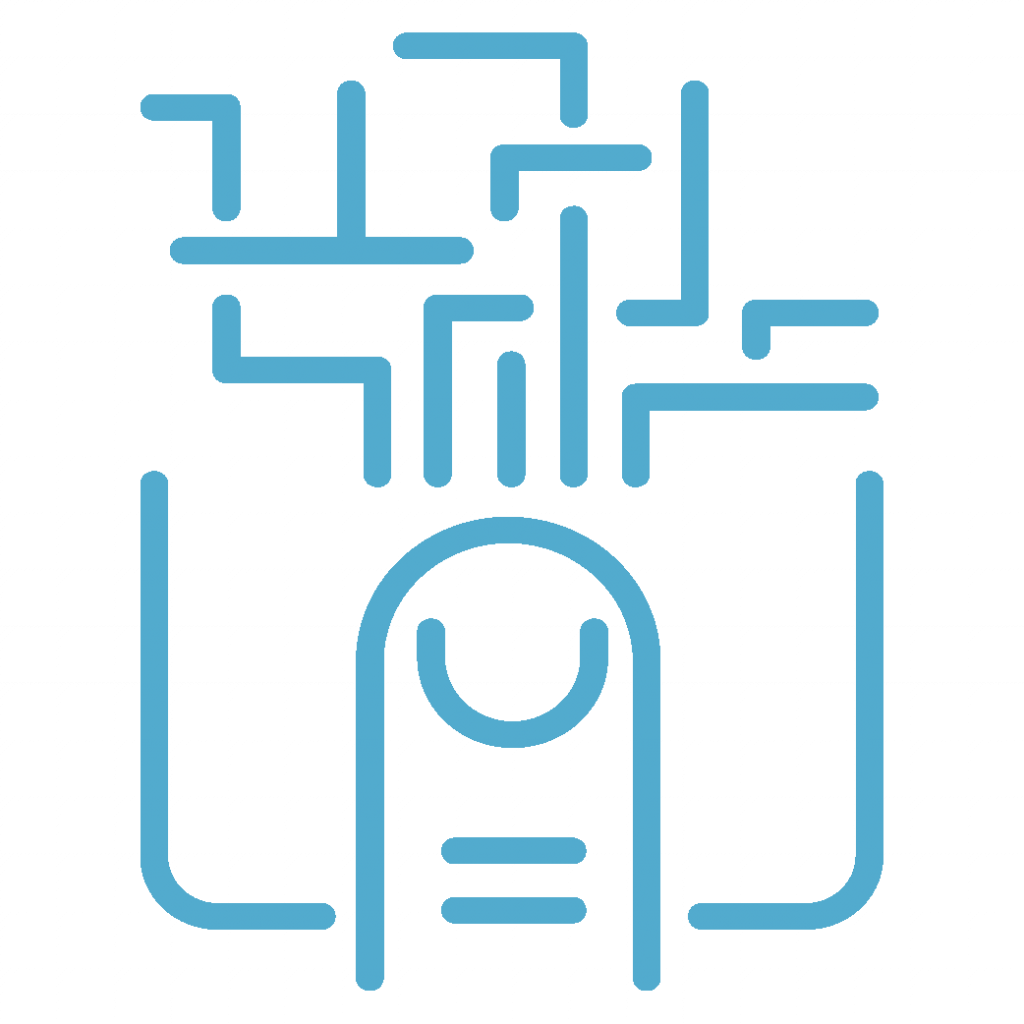
The Internet of Things involves embedding sensors and connected devices throughout built and natural landscapes, collecting vast amounts of data about people, relationships, transactions, and the physical world. There are an estimated 10 billion devices in today’s Internet of Things; this is expected to grow to between 30 and 50 billion by 2020[1] and 74 billion by 2025.[2]
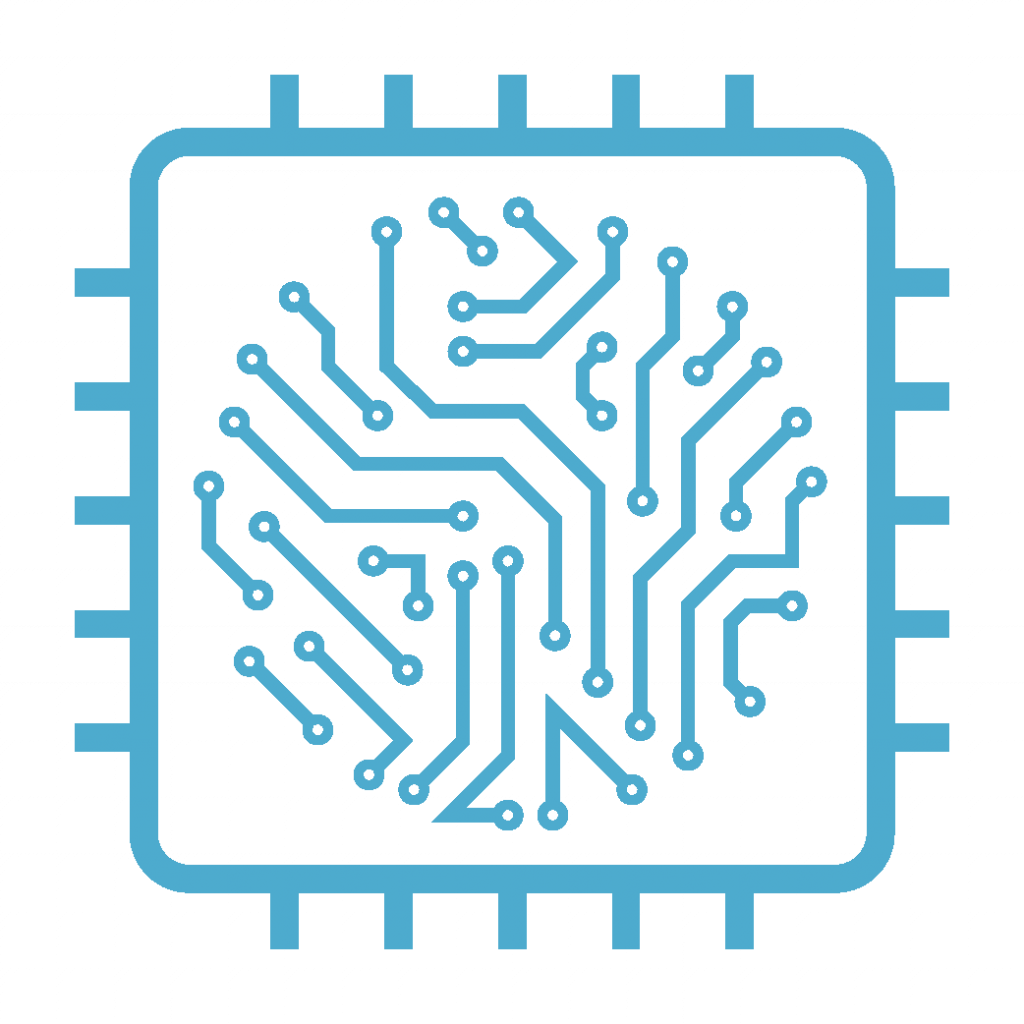
Artificial Intelligence (AI) and advanced data analytics will transform the terabytes of data from the Internet of Things into useable descriptions of objects, events, people, and context. It will make decisions and give advice based on an increasing capacity to interpret meaning. The resulting intelligence about people and the environment could enable mixed reality, in which a digital overlay interacts intelligently with the physical world.
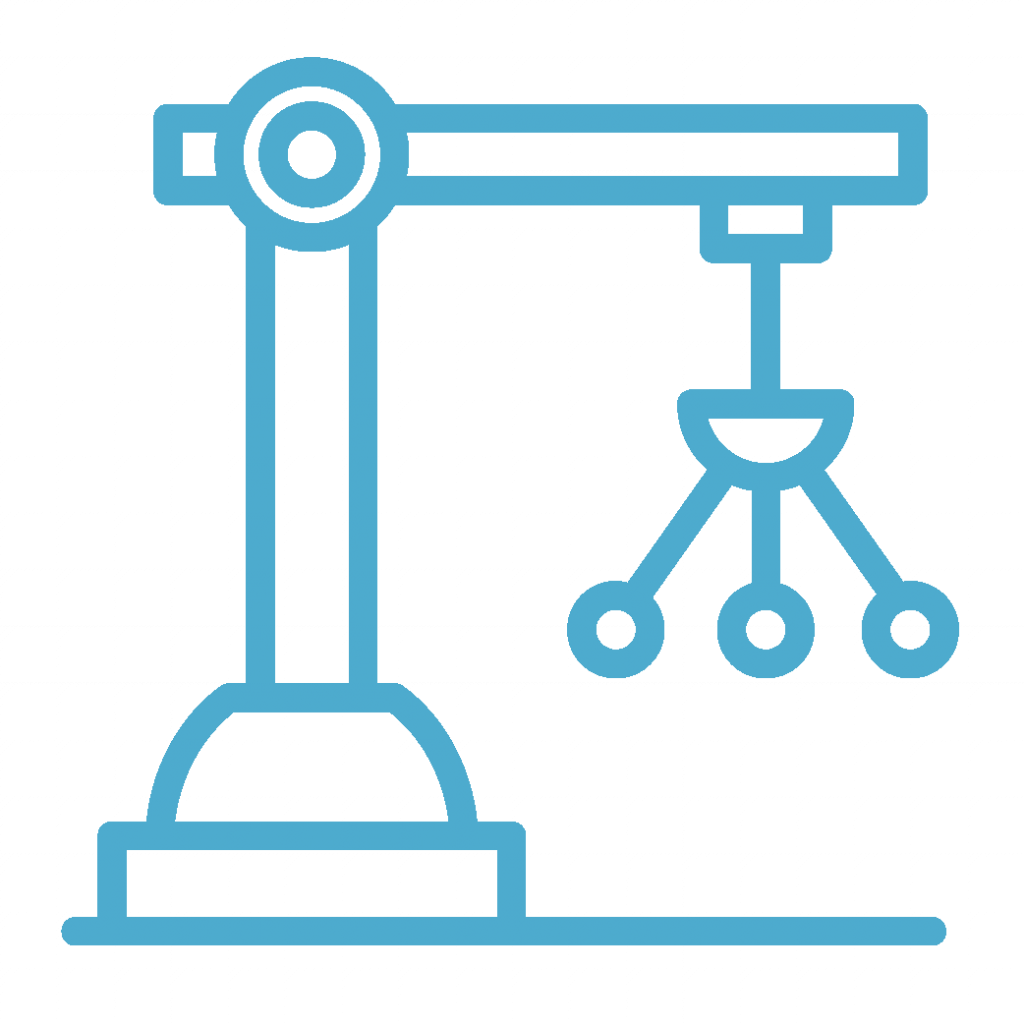
Robotics will play a larger role in many areas of the economy and could significantly reduce demand for human labour in sectors like manufacturing, agriculture, and resource extraction. In the coming years, some robots will operate autonomously and replace human work. Others may collaborate very closely with humans, amplifying our capacities and shoring up our weaknesses. Still other robots will be teleoperated by humans. Contrary to science fiction tropes, most robots will not look or behave like people.
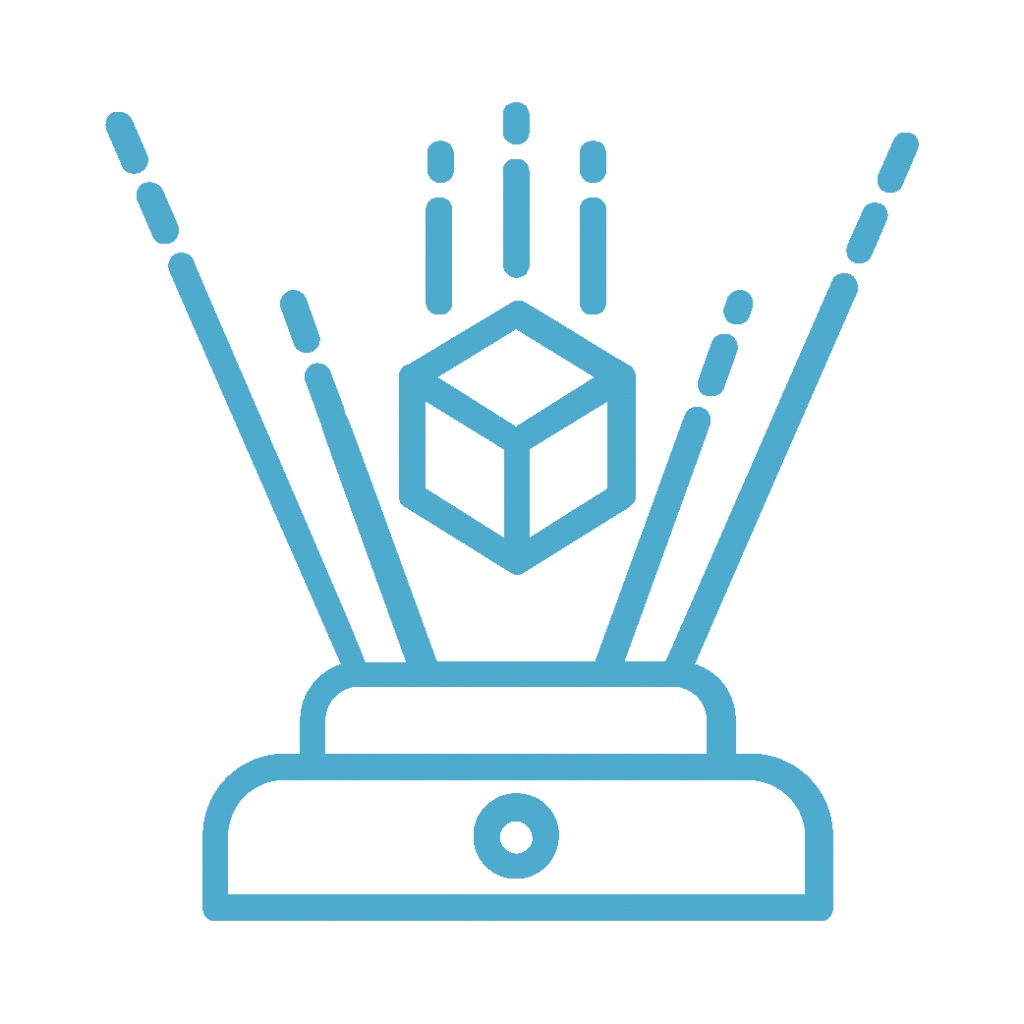
Telepresence will evolve from the current state of “dialing in” to one in which people will interact seamlessly with other people and machinery from a distance. Augmented reality headsets will enable one person to see what someone in another location is looking at and provide expert advice and direction to them in real time. This could include overlaying the other person’s field of view with relevant instructions or graphics.

Virtual reality will offer non-physical, non-geographic “spaces” in which people and machines can work, relate, learn, and consume.[3] Mixed reality is emerging as smart glasses project images or data onto a person’s perceptions of the real world. This interaction of the virtual and physical worlds will create a third space distinct from both.[4]

Synthetic biology applies engineering principles to design and create living organisms (such as bacteria, algae[5], and plant and animal cells) which can be directed to behave in particular ways. These organisms could produce traditional and new organic materials such as strong fibres, hormones, oils, meat, and pharmaceutical compounds at scale. This may allow bioproduction that does not depend on extracting natural resources from forests, oil fields, and grazing lands. Low-cost bioproduction could take place anywhere that provides access to simple and widely available inputs, such as sun, light, water, and carbohydrates.[6]
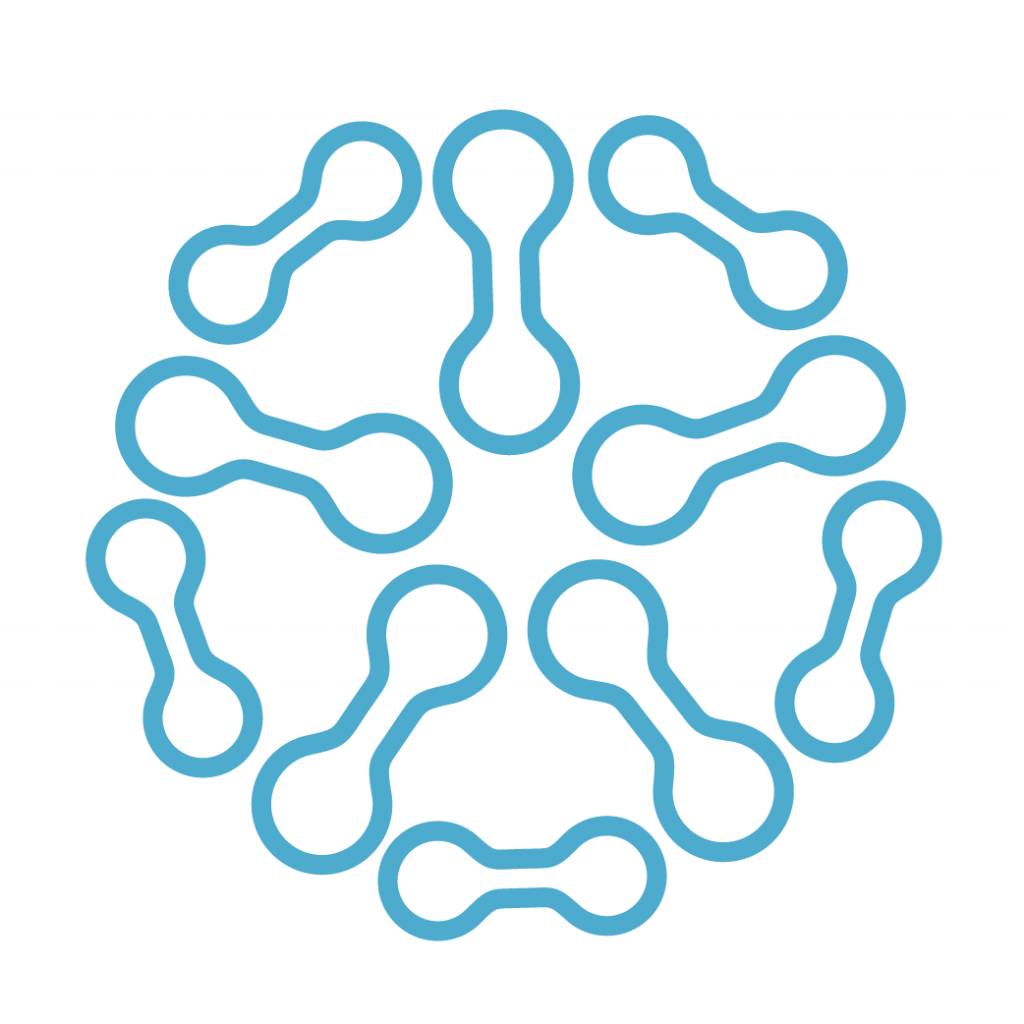
Advanced materials are allowing the creation of micro- and nanoscale devices that can bring digitization to many new areas at low power, expanding the reach of sensors and allowing computing power to be more decentralized.
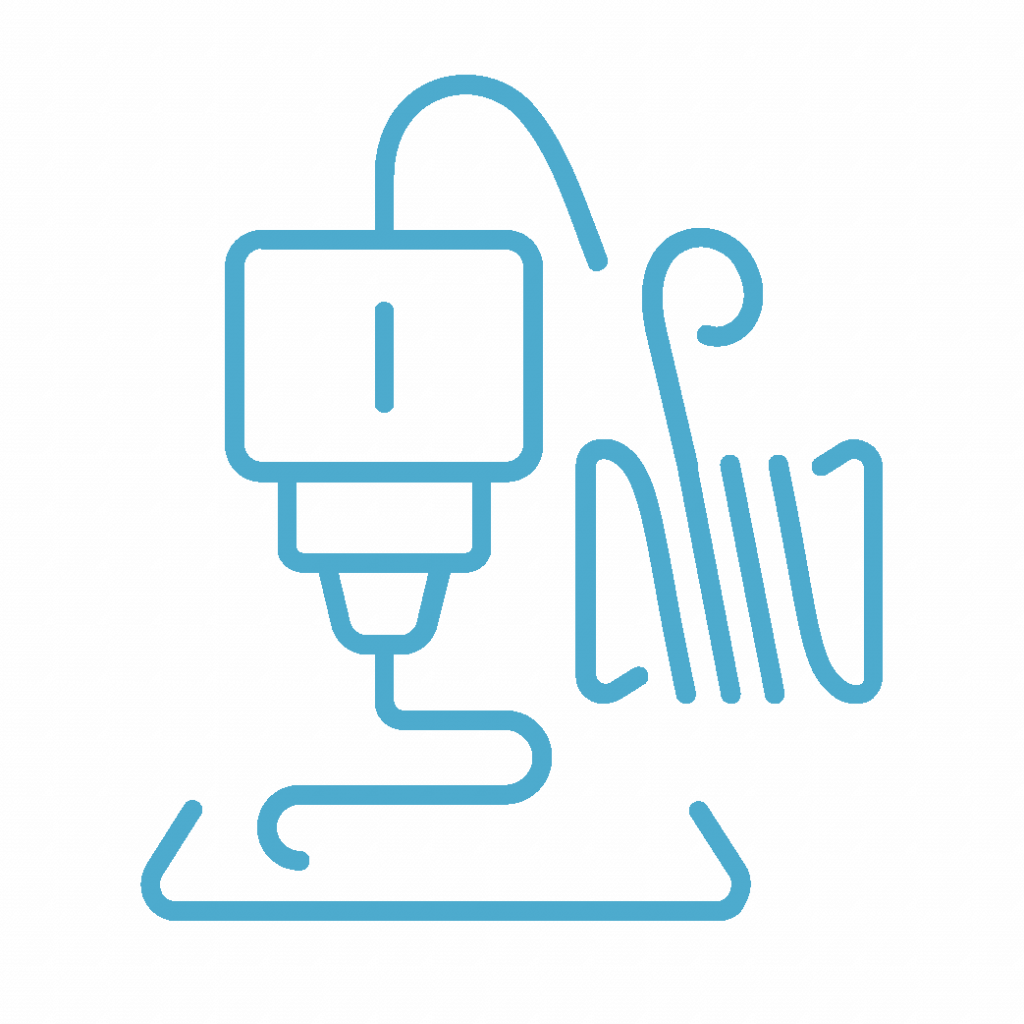
Decentralized production technologies, such as 3D printing and assembly robots, could use locally available materials, including those made using synthetic biology, to manufacture products on demand for local markets. This could transform supply chain economics, potentially leading to some “reshoring”[7] of manufacturing and even hyper-local production of custom goods.
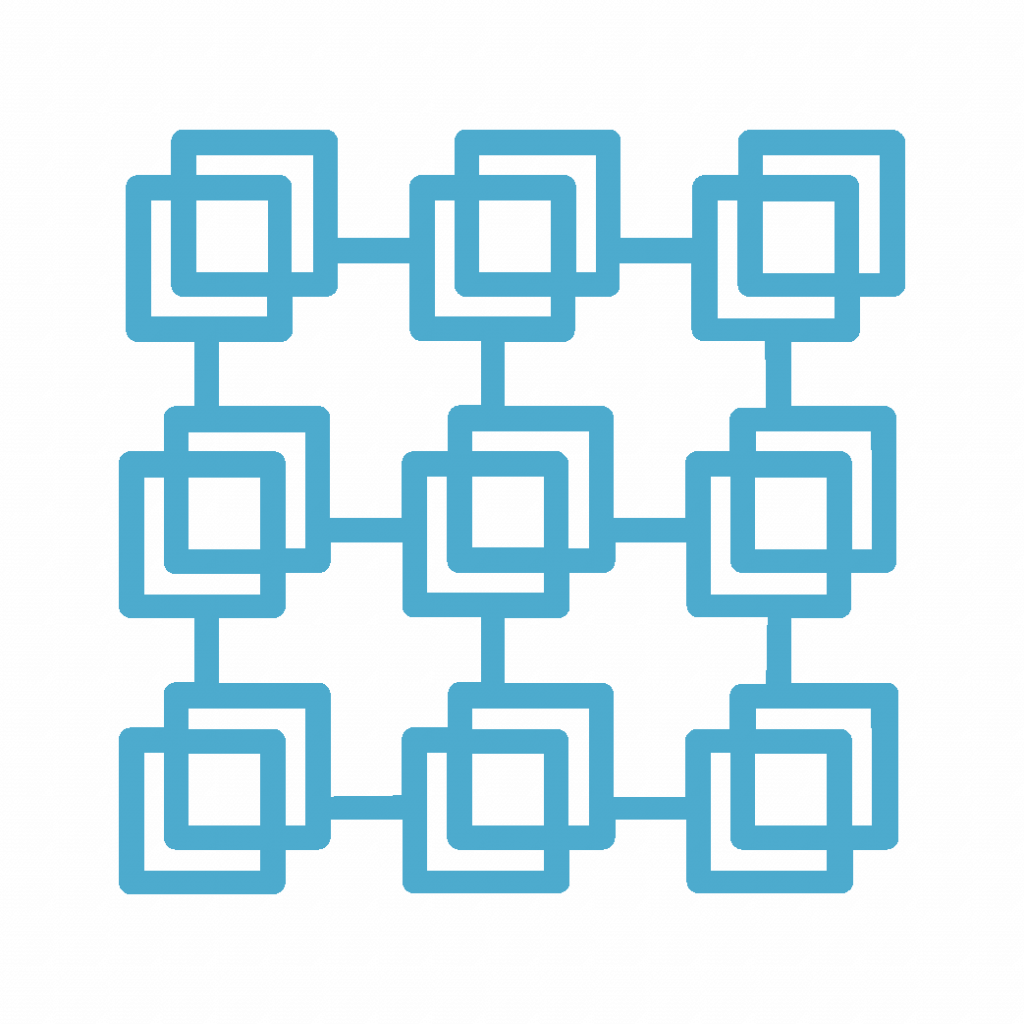
Blockchain technologies allow the creation of unique, non-copyable digital assets. While best known as the basis for cryptocurrencies such as Bitcoin, blockchains allow registration of any asset that can be represented digitally. This enables secure, low-cost transactions for these assets between parties who do not know each other. In this way, blockchain could decrease the need for trusted third-party intermediaries such as lawyers and banks for many transactions.
Jamie and my New Shoes
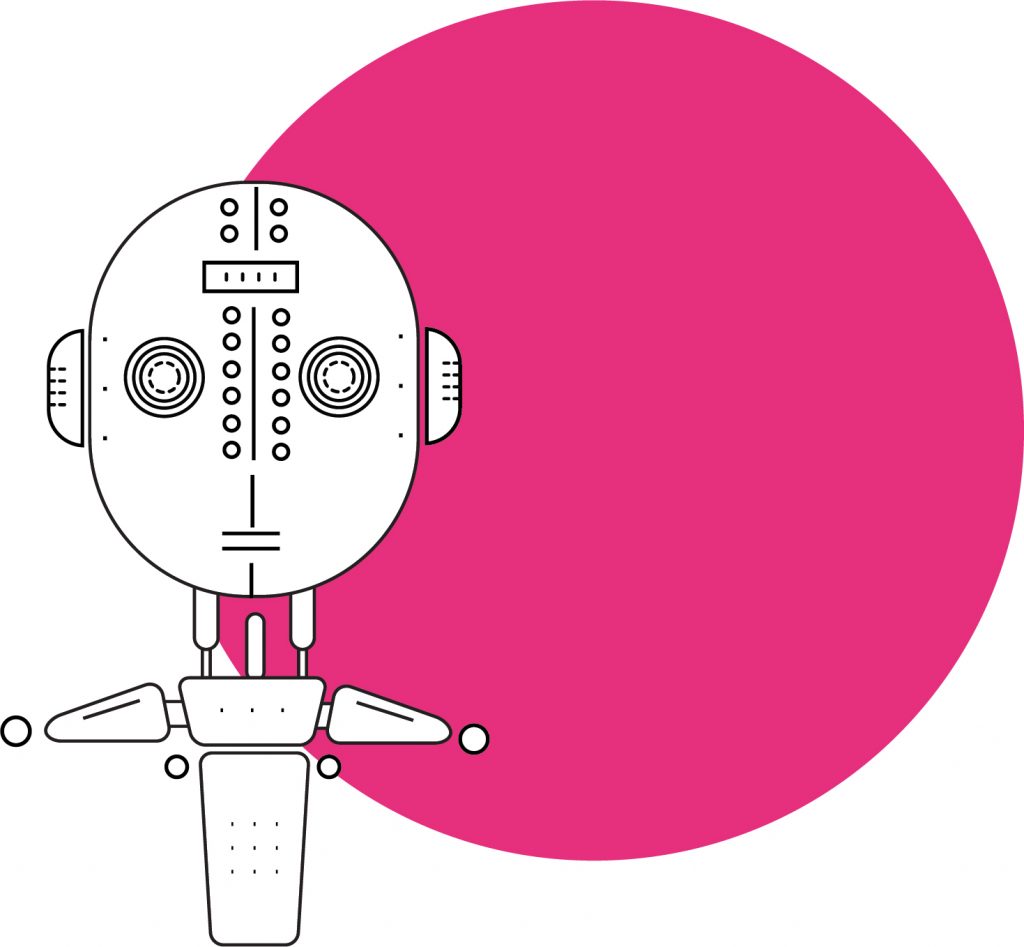
It’s 2029…
I want to buy new running shoes with blue soles and zebra-striped tops. There’s no point looking in retail malls – most disappeared some years ago when people found it easier to shop online where the virtual mall is as big as the world. But shopping online means looking for what’s already available; and unless you’re reordering groceries, why would you do that? Besides, your refrigerator has probably already ordered the groceries you usually consume and that needed to be replenished.
I always turn to Jamie for help.
Jamie is my AI, personalized to my specific preferences. I’ve set it up to sound like a friendly, laid back, gender-neutral personal assistant. But make no mistake: Jamie is blazingly efficient and infinitely patient. (The social assignment of gender to AIs has been a matter of intense public debate, but I won’t get into that now).
Part of Jamie’s job is to look out for me.
It makes suggestions that would help my mental or physical wellbeing; it nudges without being overly intrusive. It knows what I like because we’ve been together for the past two years. My AI remembers every interaction I’ve ever had with it, everything I’ve chosen in the past, and it has a digital photo of everything I’ve admired and asked it to record for me. Jamie is like an angel in the Cloud who’s always with me through my smart devices.
I describe the shoes I want to Jamie.
After a few seconds of searching shoe design databases, it presents me with a curated set of images, noting that none of them are quite what I wanted.

When I say no, Jamie connects with the personal AIs of shoe designers around the world, and those who want to bid on creating a new design send it samples of their work. My AI picks the ones that match my tastes, and presents them to me through augmented reality so I can turn them around. I choose designer #5 and send her 3D images of my feet, which are slightly different from each other. Within an hour, the designer sends me the digital version of the shoes, which Jamie projects onto a mixed reality image of me walking around my apartment.
I want to make a few minor changes, so Jamie contacts the designer’s AI to arrange a telepresence meeting. The designer speaks Japanese, and I speak English, but simultaneous translation devices let us talk as she makes the changes. The conversation takes place while I am in a flying taxi on my way to an event at my child’s outdoor school. The completed design is sent to a local 3D print shop, which adjusts the sole compound to suit the local climate.
An hour later, a drone delivers the shoes, interacting with my automated delivery dropbox, which unlocks and opens the hatch for the drone to drop the package. Jamie alerts me, in case I want to watch the delivery on my smartglasses, and confirms that the hatch has been relocked. At that point, the delivery is registered on a blockchain, and the print shop is paid in digital currency. The designer has already been paid her portion of the blockchain contract when the design reached the print shop.

This story may sound far-fetched, but it isn’t. Every one of the underlying technologies is either commercially available now or is in late pre-commercial testing. Once the technologies mature and combine, the way products and services are produced and consumed could radically change.
How does the Next Digital Economy Work?
Firms currently create products or services by organizing a set of value chains. In the Next Digital Economy, technologies allow anyone to create products and services by pulling together, ad-hoc and in real-time, the components of a value chain in a frictionless manner from a widely distributed pool of resources. The availability of unbundled factors of production, easy to combine through technology, opens the possibility of custom, and even single-use, value chains for specific goods or services. The story of Jamie and my New Shoes, above, provides a simple example of this.
The Next Digital Economy overcomes many limitations of geography, time, and jurisdiction. It also reduces local scarcity of many types of labour, expertise, knowledge and financial capital. The result could be a new basis for organizing economic activities, changing the who, what, where, when, and how of production and consumption (see The Evolution of Value Chains).
We could see a Next Digital Economy in which:
Much cognitive and physical labour is unbundled and networked. ‘Old-fashioned’ jobs are unbundled into tasks, many of which can be automated. Others are available as an on-demand service on tasking platforms.
Manufacturing and distribution are automated and multifunctional. Multipurpose machines – such as 3D printers that can use many materials – produce a wide range of goods by simply adjusting the digital programming. These manufacturing centres replace many individual single purpose-built factories. They are widely distributed, and production can occur wherever standard materials are available. Efficient and largely automated logistics services could get materials to manufacturing sites and deliver products to end users.
Some raw materials, as well as some complex organic products, can be grown almost anywhere using synthetic biology. Pulp is produced without forests, meat without animals and pasture, and combustible fuels without wells or mining.
Knowledgeable workers or machines operate remotely anywhere in the physical world that is connected to networks. This is done by teleoperation of a machine or remote guidance of a person connected through a mixed reality device.
Economies of scale give way to economies of scope. Instead of focusing on specialized production at scale, new strategies are emerging that build value by offering a broad range of goods and services where, when, and how they are needed.
Standard goods and services are replaced by customized offerings. Customization is achieved at little or no additional cost. Locally printed customized objects can compete on price with batch-produced ones. They use less material, perform to the user’s specifications, and decrease the need for warehousing and long-distance transportation.
Value chains are more ephemeral. Customized products require short production runs. As the cost of customization decreases, specific value chains for producing goods and services might become very short-lived. Individual consumer preferences could draw customized value chains into being.
AI replaces human intermediaries. All transactions in the networks generate data that can help train AI applications. As they improve, consumer and supplier AIs take over many aspects of the research, advice, design, marketing, and decision-making roles currently played by humans.
What matters is access to factors of production, not ownership. With an ever-available pool of on-demand labour, material, expertise, and goods, ownership is no longer as important to firms and consumers. But access to the infrastructure and utilities that make the pool available is crucial, and exclusion from these can be catastrophic.
Production costs are lower due to a combination of factors. More goods and services are purely digital, and many others have a growing digital component. The value of digital portions of these products and services can be replicated at low – or even zero – marginal cost. Automation is also inexpensive, and the replacement of human labour by machines offers greater production efficiency. The functions of many physical goods and services can be squeezed into digital equivalents on one physical good that is much less expensive to produce than the bundle of goods and services it replaces. For example, in the early 21st century, the smartphone replaced a wide range of products that previously existed as distinct physical devices like video and still cameras, telephones, alarm clocks, calculators, maps, GPS locators, accelerometers, compasses, handheld games, and mini-televisions.
How Is This Transition Different from Any Other Major Technological Industrial Revolution?
Like all technological revolutions, the Next Digital Economy will be disruptive and potentially difficult to manage for many individuals, corporations, and governments. However, it has some unique characteristics that could aggravate those challenges:
- The unbundling of jobs into tasks could significantly accelerate the spread of unemployment across economic sectors. In the past, workers who lost jobs in a declining sector may have found similar work in a growing sector. In the Next Digital Economy, a task that can be automated in one sector can also be automated in any other, putting entire lines of work at risk of becoming obsolete across the whole economy.
- Digitization could spread rapidly around the globe. Previous technological disruptions that occurred in one country took a long time to spread to other countries. This was partly due to the high cost of energy and transportation infrastructure, and the need for specialized manufacturing machinery. But the barriers to entry in the digital economy could be comparatively low, as participation only requires access to the means for creating value, rather than owning them. Creating value is not necessarily based on economies of scale or moving physical goods to markets; digital technologies allow anyone anywhere in the world to serve markets of any size.
In past technological revolutions, many of the scarcities of labour, expertise, knowledge, or capital provided some buffer against rapid and widespread transition. The technologies underlying the Next Digital Economy tend to erode these buffers.
What Might the Next Digital Economy Look Like?
In the Next Digital Economy, economic actors and sectors will see significant change. In this section, we highlight some of the major shifts that policy makers should consider.

What happens to firms?
From corralling resources to calling up ephemeral value chains
The Next Digital Economy may create a turbulent period of ‘creative destruction’ and fierce competition among firms. Firms based on traditional models may struggle to survive as new entrants arise or move in from other sectors. Only a few firms might win big in this network-effect economy. In such a world, firms may avoid taking on future liabilities to stay nimble.
Firms transform to take advantage of low-friction access to on-demand labour and production resources. Smart, agile, and virtual firms could be more successful and resilient in global on-demand value chains than larger, more capital-intensive traditional firms.
Firms could have fewer full-time personnel as they outsource many functions to online-sourced gig workers or to other specialized firms. Some firms that perform routine services that can be handled entirely by AI could become largely automated with very few or even
no workers.
Larger firms may have their own AI-driven platforms, amassing vast amounts of personal and business data. They will continue to leverage that data to produce and market customized goods.
Software on the cloud could allow small- and medium-sized enterprises, micro-corporations, and entrepreneurs to contribute to new value chains that could be either standardized and ongoing or short-term and customized (even one-offs). These firms could also efficiently assemble their own value chains from on-demand online human and physical production resources distributed around the globe.
Many firms may not be designed to persist and grow. With near-zero friction in bespoke value chains and relatively cheap replication or substitution of goods and services, some firms might be designed to last only a few weeks or months.
Smart contracts and blockchain tracking may eliminate firms that are primarily intermediaries providing trust and payment systems.
Competition and data protection laws will have a profound effect on what business ecosystems and value-capture models will emerge in the Next Digital Economy.
What happens to workers?
From local jobs using machines as tools to global gigs with machines as co-workers
In the Next Digital Economy, new technologies will mature and combine to change both the levels of employment and the nature of work. A number of game changers are emerging.
AI and automation could reduce demand for existing human work long before these technologies replace entire jobs. Already, jobs are being unbundled into tasks, many of which can be automated now or in the near future. So machines can displace humans without needing to do everything that was previously bundled into a person’s job. Human effort can then be focused on the remaining tasks – reducing the overall levels of human work required to meet demand. For example, if all the highway driving in a long-haul truck trip can be automated, human drivers (or remote controllers) could be required only for the complicated tasks of getting the trucks from the point of departure to the highway, and then from the highway to the final delivery site. They may even do this via remote control. So automation could greatly reduce the total requirement for hours of work by drivers long before AI can handle in-city trucking. On the other hand, these new ways of doing business may also open up new roles for humans in firms that serve the new value chain.
‘Centaur work’ in which machines closely support – not replace – humans may change many workers’ experience. Many of these changes could make work better and more meaningful. Robots may take on routine, repetitive, and dangerous tasks. Humans could focus on higher-value and more appropriate activities, leading to higher productivity and better outcomes. But note that over time, robots may learn from these interactions, and could replace humans in some of these tasks as well.
Robot-centric workplace design could reduce barriers to automation. For example, some new grocery warehouses are being designed without traditional floors and shelves – machines can then move easily along a grid of tracks and reach down into storage bins. Whereas robots struggle with human-centred shelving, humans would have great difficulty navigating much of this robot-centric workplace. This phenomenon could accelerate automation in surprising ways – especially where it has been assumed that machines could not handle complex environments to which humans are better suited.
Where people work and earn may not be where they live and spend. Task-based platforms and advanced telepresence allow people anywhere in the world to perform cognitive and physical work for clients anywhere. Local scarcities of talent for many kinds of expertise could fade, while new types of work such as for telerobotics operators and ‘tele-grunts’ emerge. Canada’s labour force would include people who live in the country and work online for either domestic or foreign employers. It could also include people who live abroad and perform tasks for national employers, as part of global digital value chains.
Both white- and blue-collar workers could find themselves in a global, competitive talent pool as geographic and jurisdictional boundaries are broken down in the Next Digital Economy.
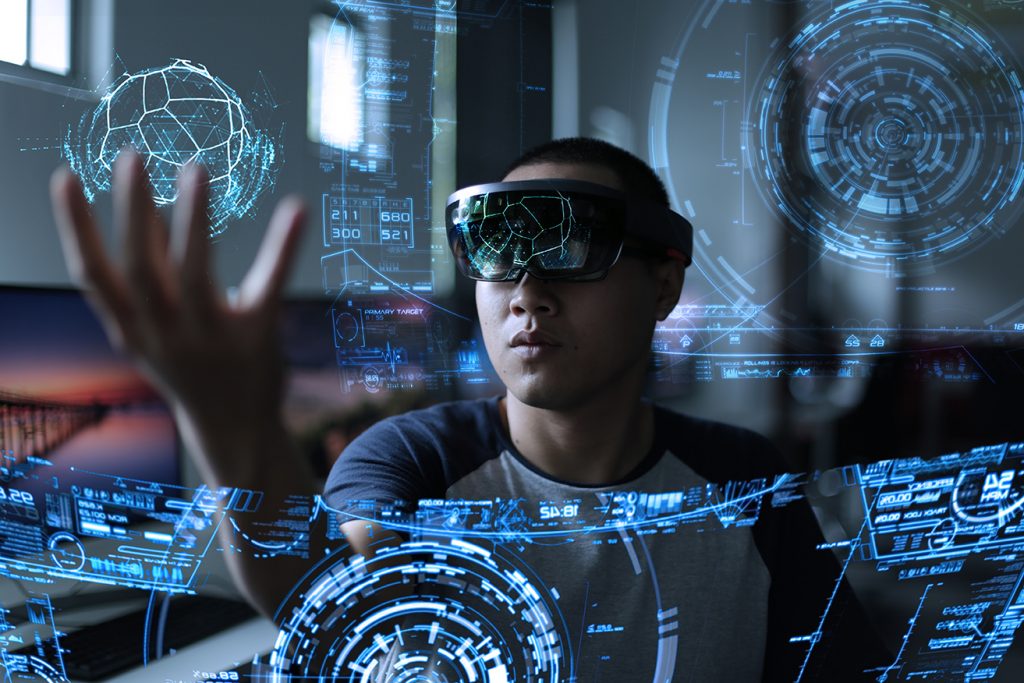
AI has the potential to greatly reduce the scarcity of knowledge workers. Adding knowledge-based work capacity currently involves the costs of recruiting, training and managing additional humans. An AI can gain existing knowledge and can be duplicated at near-zero marginal cost without additional humans. Adding knowledge work capacity then becomes a “cut and paste” effort rather than a “hire and train” effort, creating the potential for jobless growth in knowledge industries.
Combined digital technologies could reduce the role of and need for human intermediaries. In this Next Digital Economy, any job that primarily involves facilitating agreements or transactions between other humans could be put under pressure from technologies that make data discovery easier and allow trusted transactions between parties.
Compensation for work could move from being time-based to task-based. In the gig economy, much of the work is already task/ outcome-based rather than time/input-based. This compensation model could become the new normal and spill over to work in other areas of economic activity.
Traditional employee-employer relationships may be less common. Employers might be wary of taking on liabilities in a fast-changing world, where they have access to either flexible work arrangements or to knowledgeable, tireless, updatable, and dependable robots that do not need retirement benefits or vacation time.
The overall effect on average wages is unclear, though increased wage polarization is likely. Real wages of workers whose scarce skills complement automation would increase relative to those whose skills can be substituted. We could see a global convergence of wages for similar tasks if workers from lower cost of living areas consistently underbid workers from higher cost of living areas.
What happens to the service sector?
From human intermediaries to AI-enhanced services
About 80% of the Canadian labour force works in services. The service sector is likely to experience the early effects of the transformation to the Next Digital Economy, significantly affecting Canadians and our economy.
Over the next few years, digital technologies and platforms will dramatically change the nature of both high- and low-skilled services. For example, AI could provide customized services to individuals and firms in areas such as accounting, insurance, investment, banking, law, education, health diagnostics, and retail. And purpose-built robots could automate many services related to delivery, construction, personal care, cleaning, driving, and groundskeeping.
Telepresence and mixed reality could also create ‘tele-grunt’ services, in which low-skilled on-site workers perform physical activities under the guidance of an off-site, high-skilled expert. For instance, an expert in water filtration could help fix a broken system in the Far North without leaving headquarters, using local non-skilled labor. This could accelerate the transformation from a local to a global marketplace for services.

New lines of on-demand, customized services will emerge from new combinations of human-human, human-machine, and machine-machine expertise. We may see growth in customized services that help individuals and firms to adapt and benefit from implementation of new digital technologies.
What happens to the manufacturing sector?
From economies of scale to economies of scope
Today, we mostly think of manufacturing value chains in relation to companies that command enough capital to direct or procure the design, manufacturing, global distribution, and eventually the local sale of a restricted number of consistent product lines. In this model, profits often arise from economies of scale – becoming the lowest-cost producer of identical goods for a large number of customers.
Distributed manufacturing could enable local and regional production of custom goods on demand. The countless possible links between 3D-printing processes, robotic assembly, and numerous biological, mineral, plastic, and synthetic raw materials could allow local production of a vast range of new 3D-printed products, from houses to artificial livers.
AI, data analytics, robotics, and labour-tasking platforms will further unbundle manufacturing value chains and draw on a wider ecosystem of online, on-demand resources from all over the world, even before 3D printing and other automated production technologies become ubiquitous.
Meanwhile, a gradual dematerialization of the economy is likely. The proportion of digital components in goods increases, so improving that good – or creating additional value – can involve updating the software and downloading extra features, rather than replacing the ‘hardware.’
Profits in such a business model can arise from economies of scope – operating within a smaller market to provide a wide range of products for those customers, or offering a broad set of value proposals on one product.
A higher proportion of value and trade is bound to become virtual, under the combined effect of local production capacity and value creation from a good’s digital components.
What happens to the natural resources sector?
From local jobs to automated or remotely controlled extraction
The natural resources sector could be significantly automated. For example, new mining techniques involve a high level of automation in drilling and transporting materials. These automated mining operations can be controlled from an office far away from the extraction site. Similarly, forestry firms are testing self-driving logging trucks, tree-planting drones, and automated forest management systems. In the oil and gas sector, automation, and robotics are being used to inspect infrastructure and perform diagnostics on areas detected to be in need of repair.
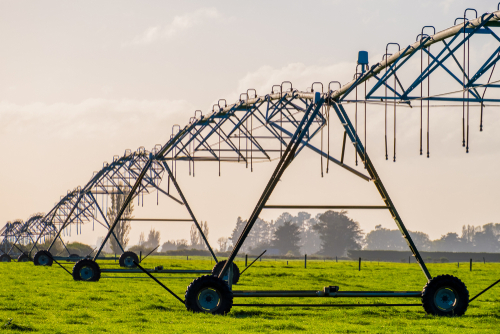
These advancements in natural resources automation could lead to an increase in production but also a loss of jobs, particularly in communities near to extraction sites.
This could be devastating for the secondary economy in many remote communities, which could lose both labour and management jobs. Whereas resource towns traditionally suffered when a resource ran out or became unprofitable, automated extraction could cause the same consequences for communities while high-value resources continue to be extracted profitably.
This could change the relationship between extraction firms and local communities – and in particular the consultations and negotiations with Indigenous peoples with rights in respect of lands and resources. A new approach may be required if the promise of jobs and local economic development is not part of the allure of proposed resource projects.
From natural resources to synthetic biology
Natural resources and energy projects are the basis for job creation and economic activity in many rural and northern communities across Canada. They are also a key source of exports and national prosperity.
Synthetic biology could be a major disruptor to traditional resources as well as a new source of prosperity, although new technologies are also likely to improve efficiency and productivity in resource sectors.
For example, modified bacteria can already produce diesel fuel, using sunlight and a cheap carbohydrate that is competitive with petroleum-based diesel. Synthetic biology may allow us to program living organisms to produce many other resource inputs, such as high-tensile construction materials and foods, which are currently extracted from forests, mines or agricultural land.
As products from synthetic biology become widely commercialized, it could change the economics of producing natural resources, food, energy, some chemicals, pharmaceuticals, and human organs. For example, it could turn places with cheap energy (such as sun-scorched deserts) into natural resource manufacturing centres.
In addition, new biomaterials could change and expand the characteristics of 3D printing and 3D-printed goods.
Transportation and production in the Next Digital Economy could run on electricity rather than on oil, meaning that nations with cheap, reliable, and clean electricity could have an economic advantage over those that do not.
What Are the Challenges and Opportunities in the Next Digital Economy?
The following is a preliminary exploration of some challenges and opportunities arising in the Next Digital Economy:
Economic Development Strategies
Governments will need to both make and encourage investments that capture the benefits of the Next Digital Economy, while minimizing the negative impacts on employment.
Sectors that provide the global and local infrastructure of the Next Digital Economy are likely to see growth, although it may be difficult to predict the specific jobs that will emerge. Talent required to create value in these sectors could be located in Canada or abroad.
The primary and secondary economies may become less closely linked. In a global online labour market, where a person works and earns their pay can be completely different from where they live and spend their pay. A person working online outside Canada for a Canadian firm would be paid by that firm, but would not spend their earnings in Canada. Their earnings are not available to support a secondary economy of local businesses that provides employment for other Canadian workers.
A comprehensive economic development strategy could include measures to support and grow physical, social, and cultural infrastructure to make it attractive for high-income earners to physically reside and spend in Canada, regardless of where they work and earn their income.
Support for Employment and Skills Development
The potential for structural unemployment, over the short term as well as the long term, could result from automation and the increased use of digital tools in many areas of the economy.
It is worth questioning whether traditional business cycle assumptions will hold throughout the transition to the Next Digital Economy. The assumption has been that after a period of economic turmoil and job losses, employment will return to its equilibrium level, as real wages adjust, workers acquire new skills, and higher total incomes create demand for goods and services – although this adjustment could be lengthy.
There is much to learn about whether and how workers who became unemployed due to task automation can be retrained/reskilled. Good opportunities will likely remain in existing jobs that are not automated, existing jobs that are transformed, and entirely new ‘Next Economy’ jobs. Developing the required skills and aptitudes may take many unemployed workers a long time, and may even be impossible for some.
Structural unemployment could intensify if retrained workers are still not able to compete against lower-cost competition in a global talent market. Some could continuously be priced out of the labour market by competitors in countries with a lower cost of living who are willing to do the same work for less pay and fewer benefits.
Trade Policy
Trade tariff and non-tariff measures to protect the domestic economy or generate import tax revenue could become less effective or harder to enforce. For instance, enforcing tariffs or import quotas on streaming movies from a foreign company is more difficult than it was to enforce tariffs on physical DVDs crossing a border. With local manufacturing capabilities expanding and the portion of digital goods increasing in the overall economy, the portion of trade that is digital could soar.
The absence of effective tools to monitor and enforce tariffs and non-tariff barriers could mean we are in a period of de facto free trade for many digital goods and services. New tools and laws could revive the rules-based order, but parties using the dark web could circumvent the rules and return to de facto free trade.
The emergence of digital trading blocs with different rules on privacy, data location, and access, is a potential challenge for trade policy at a global level. The WTO recently (2017) launched a new initiative with 70 countries to consider emerging issues related to trade in the Next Digital Economy.
Social Supports
A growing number of people may have insufficient income to support themselves and could turn to government programs for help. If the number of people with nonstandard and precarious work grows, we may need to rethink the design of social safety nets.
Many social supports depend largely on an employer-employee relationship within the context of a firm. These include such programs as pensions, employment insurance, private health benefits, and on-the-job training. In the Next Digital Economy, formal employment relationships may be less common, raising questions of eligibility and funding for existing and potentially new government programs.
Pressure to ensure the global portability of benefits could rise as more Canadians work on international platforms in full-time or gig roles. Countries may need to explore international supports and standards.
Uneven distribution of digitally driven employment and wage losses could lead to greater inequality. Some individuals or groups may see increasing consumer surplus; their incomes may be relatively constant while the cost of goods and services declines, making them feel wealthier. Those who retain employment will be “better off” even at zero real growth in wages. Conversely, those who lose employment could see little benefit from lower costs of goods and services, as they could have little or no disposable income with which to enjoy lower prices.
This could put pressure on governments to redistribute income, employment, or assets to people whose lost income is not offset by a rise in consumer surplus. The pressure to redistribute could come from groups throughout society, including from large corporations whose commitment to equity may be part of their social license to operate.
A future with significantly fewer jobs would challenge the way many Canadians build meaning, relationships, status, connection to place and community, and the daily structure of their lives.
Regulation
While laws and regulations are enacted by governments with geographic jurisdictions, digitization enables activities that flow across borders.
Digital files for goods can be imported across jurisdictional boundaries with little or no impediment, and then used for local production of goods or delivery of service within the jurisdiction. This has implications for enforcement of environmental and consumer safety regulations. It may be difficult to test the designs against domestic standards when they cross the border. It could also be difficult to ensure that safe and appropriate materials are used when a good is manufactured locally and privately from a digital file. It may be difficult to control the entry of illegal products such as firearms or drugs, as they would not enter the country in physical form but could also be produced locally from an imported digital file.
Labour standards and regulations could become harder to implement, as they typically depend on worker residency, hourly compensation, and a physical workplace managed by a regulated firm located in Canada. In a global gig economy, it might be difficult to enforce minimum hourly wage, maximum working hours, workplace health and safety, and human rights standards. In the Next Digital Economy, we may need to monitor and coordinate national and international norms and standards. We may also require new dispute resolution mechanisms to effectively protect virtual workers against exploitation.
Anti-competition laws may need to be adjusted or enforced differently if a few large actors are able to capture significant elements of the infrastructure upon which the digital economy runs. Concentration of ownership could be particularly challenging if important economic actors are not willing to pass reduced costs onto the consumer as lower prices, or to employees as higher wages.
Intellectual property rights could be difficult to enforce or monetize. While it may be possible to prevent competitors copying digital code, once an idea is in the public realm, it becomes possible for a similar digital product or service to be created through a parallel but distinct code. In addition, the value of the digital code could be undercut by open-source software with similar features, and by firms operating in jurisdictions that are lax towards enforcement of foreign intellectual property rights.
Privacy laws may also be challenged. Reputation scores, which are personal attribute rankings on aspects such as the quality or timeliness of work, are a common feature on online work platforms. If more intense scoring became the norm for accessing employment, Canadians could be at risk of having to give up data that would be protected under domestic law, to gain work on platforms located in jurisdictions with different standards. More generally, living and working alongside AI applications in digital networks generates massive data about people that can be harvested in identifiable or non-identifiable forms for many purposes.
Environmental Sustainability and Regeneration
The Next Digital Economy could have profound consequences for the natural environment and environmental protection regimes. Some new environmental risks may emerge, for example, from waste or emissions from rapidly changing micro-production facilities that reshore production into communities across Canada.
But many of the consequences of the Next Digital Economy could be positive for the environment. More efficient production and transportation systems – including an overall decrease in transport resulting from distributed manufacturing – could improve the environmental impacts of many goods and services. The next digital technologies may also facilitate very detailed tracking and accountability for the environmental effects of goods and services throughout the value chain.
Some of the technologies and business models in the Next Digital Economy could also facilitate a circular economy. Bioproduction may enable some value chains to sequester atmospheric carbon and positively restore or regenerate degraded ecosystems.
The Next Digital Economy could require much less physical material to achieve the same or greater welfare. Additive manufacturing, in which objects are built up in layers, could reduce resource use, as it generates less waste than subtractive manufacturing process where raw materials need to be cut, milled, or drilled. The manufacturing of smarter devices and the capacity for the producers to send software updates may contribute to extending the lifetime of products and therefore slowing their obsolescence.
Taxation
The Next Digital Economy raises fundamental questions about how, where, when, and what to tax.
Administering taxation on economic activity becomes more complex. It gets more difficult to determine where value gets created, what part of the digital value chain should be taxed, and how much of the production or added value occurs within a government’s jurisdiction.
Some argue that governments should meet the challenge with special reforms focusing on highly digitized businesses. Others insist that the whole international tax framework, including for traditional businesses, must be completely rethought.
Two international processes (EU and OECD) are currently exploring how to tax goods and services in the Next Digital Economy but neither has reached a consensus as of March 2019.
Corporate tax revenues could fall due to reduced profits in a hypercompetitive economy.
Income tax revenues could come under stress in high-income countries if we see global wage convergence. It might also be difficult to collect accurate income tax revenues from gig workers. Platforms themselves are reluctant to take on the burden of collecting taxes or share customer data with governments. Some workers may reduce the visibility of their income by choosing platforms that do not share data, do not withhold taxes, or do not use blockchain – or they may take work on the dark web, where tracking is even harder.
Fiscal Policy
Fiscal capacity could be constrained by falling income tax, value-added tax, and corporate tax revenues caused by unemployment and decreased consumer spending. This could happen at the same time as subscription to social safety programs increases. Additional fiscal pressure could arise from a worsening dependency ratio as the population ages.
If private company pensions and benefits decline, the government will likely be called on to replace or supplement income. However, many public programs rely on employer contributions, which could decline if fewer people work in formal employer-employee relationships.
In a rapidly changing economy, governments may find it more difficult to do long-term financial planning if tax and other revenue streams become less certain. Deficit financing by governments may become more difficult, as it assumes the deficit will be paid down in the future when the economy picks up and tax or other revenues increase.
Measuring the Next Digital Economy
It may be necessary to develop new indicators and measurement methods that better reflect how the Next Digital Economy affects consumers and producers.
Gross domestic product (GDP) and other traditional metrics of economic activity may become less relevant for understanding welfare and economic performance in a highly digitized economy. For example, a falling or flattening GDP growth could mean that technology has destroyed purchasing power (earnings) or investment potential in a given jurisdiction, which would be negative. But it could also reflect broad decreases in consumer prices, which could signal enhanced consumer welfare and thus be positive in many ways.
The pace and impact of digitization will differ significantly across sectors, demographic populations and regions. Those changes to specific markets may not be well captured by an aggregate indicator such as GDP. This increases the likelihood that we could misidentify the source of changes to specific markets.
Fiscal and monetary stimulus to promote investments that grow the economy as measured in GDP or employment may not be the best way of increasing real welfare, especially if it turns out that welfare is increased by the same phenomena that decrease GDP.
More fundamentally, if digitization leads to decreased prices across the economy, we may need new measures and approaches to that work in a period of deflation.
Value and Values in the Next Digital Economy
One of the key questions in the Next Digital Economy is “What will have value in a digital future?”
There is still value in real-world materials such as food, water, land, shelter, and the physical devices and infrastructure that the digital world runs on. How much of what we value can be shifted to digital form?
We could move to a world in which scarcity for many things could be dramatically reduced or even disappear. As a result of digitization, we can produce additional units of goods or services at very low marginal cost. This could reduce ‘zero-sum game’ mentalities and change perceptions that nations must compete to secure scarce resources. Cooperation between nations could produce more benefits for the citizens of both countries. This could become a more common approach, as digitization continues to blur the geographic basis of work, services and engagement with institutions.
The Evolution of Value Chains
1. Bricks and Mortar
- Large inventory in physical space
- Mass production based on economies of scale
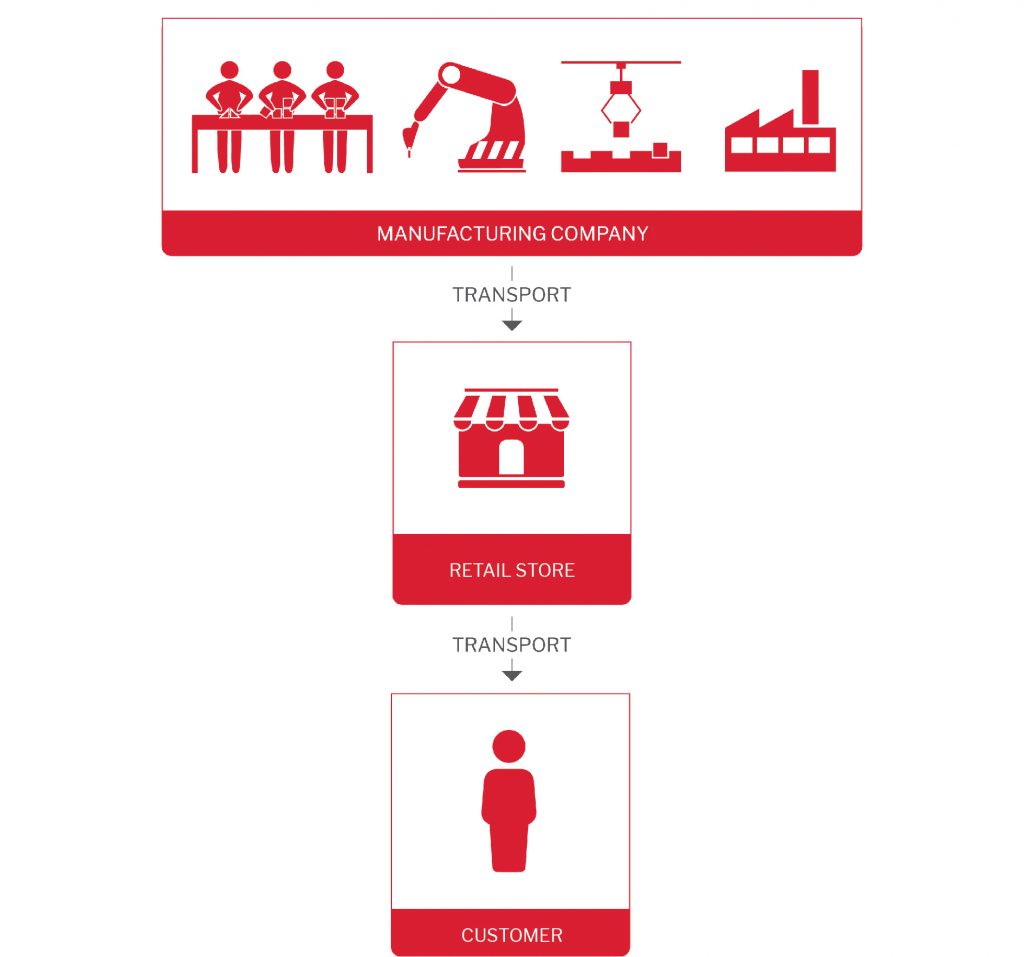
2. E-Commerce
- Decrease of in-person front-line service provision and centralized inventory
- Mass production based on economies of scale
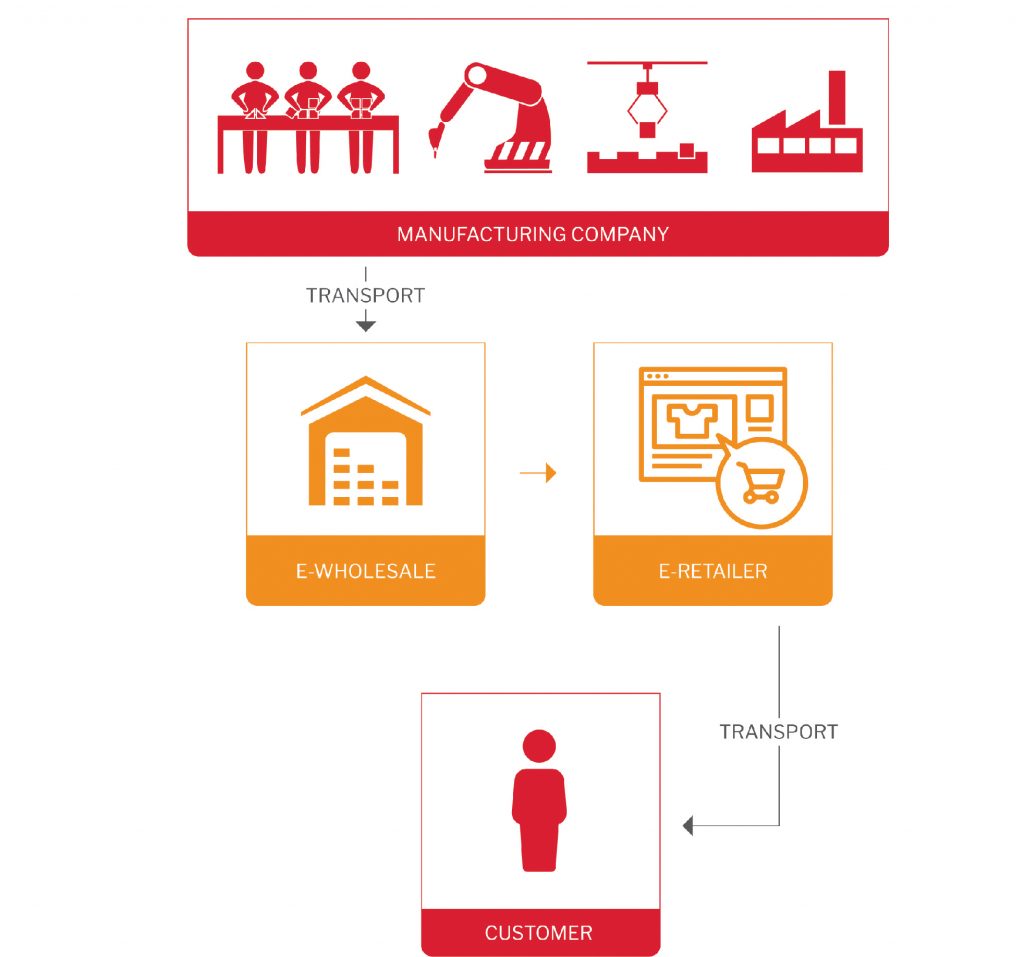
3. Industry 4.0
- Hybrid manufacturing uses flexible robotics and 3D printing to deliver affordable short-run and on-demand production

4. Distributed Networked Manufacturing
- Online platforms allow customers, designers, and 3D print shops to coordinate and even co-create, providing start-up entrepreneurs with a large customer base and bypassing traditional manufacturers
- One-off customization
- Ephemeral value chains based on economies of scope
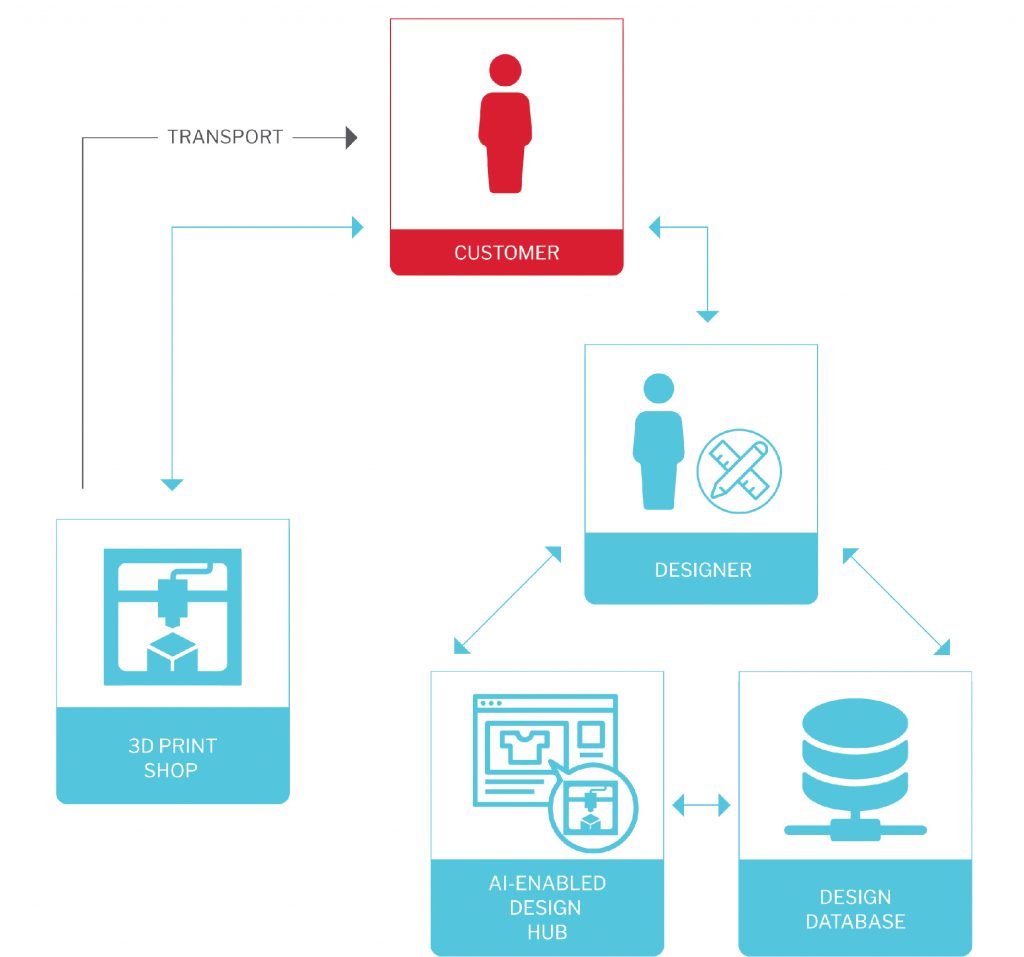
5. The Next Digital Economy
- Artificial Intelligence (AI) reduces the burden of considering many or all options. It allows for rapid complex production negotiations between multiple actors and their AIs. This reduces friction between customers and a network of collaborating goods and service providers.
- On-demand full customization
- Ephemeral value chains based on economies of scope

Acknowledgements
This report is the result of extensive economic foresight by Policy Horizons Canada to explore how the transition to the Next Digital Economy could play out. The work involved research, interviews, and workshops with several departments and agencies across the federal public service, as well as external stakeholders and experts.
The Next Digital Economy Project Team Members
Marcus Ballinger, Manager
Martin Berry, Foresight Analyst
Steffen Christensen, Senior Foresight Analyst
Pierre-Olivier DesMarchais, Foresight Analyst
Avalyne Diotte, Foresight Analyst
Peter Gibaut, Foresight Analyst
Jennifer O’Rourke, Foresight Analyst
Peter Padbury, Chief Futurist
Rhiannen Putt, Senior Foresight Analyst
Many Horizons staff contributed to this report by providing leadership, facilitation, research, drafting, and design, namely: Kristel Van der Elst, Emma Garand, Ian Lambert, Nelly Leonidis, Alain Piquette, Eric Ward, and Nadia Zwierzchowska.
We would like to thank the numerous departments, agencies, stakeholders, and experts who contributed to our work on this report.
The ideas presented in this report do not necessarily reflect the views expressed by everyone interviewed.
Endnotes
[1] McKinsey, The Internet of Things: Sizing up the opportunity (December 2014)
[2] IHS Markit, IoT Platforms: Enabling the Internet of Things (March 2016)
[3] Mandal, Sharmistha. Brief Introduction of Virtual Reality & its Challenges; International Journal of Scientific & Engineering Research (April 2013)
[4] Billinghurst, Mark. What is Mixed Reality?; A Medium Corporation (March 2017)
[5] University of California San Diego, The San Diego Centre for Algae Biotechnology (May 2013)
[6] UNBC, An Introduction to Synthetic Biology and iGEM (2017)
[7] Vanchan, Vida, Rachel Mulhall, John Brison. Repatriation or Reshoring of Manufacturing to the U.S. and UK: Dynamics and Global Production Networks or from Here to There and Back Again; Wiley Online Library (September 2017)